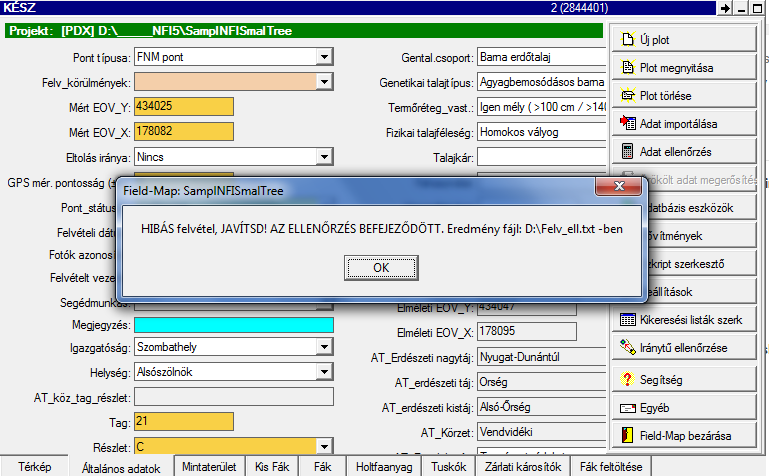Data control and quality assurance
The outcome of data collection jobs and the ability to use the results depend heavily on data quality. This is especially the case with systems such as a statistical forest inventory, where single sampling points represent areas, which are several times larger than the sample plot, hence potential errors multiply when results are reported. Recognising this circumstance, we have exerted major efforts to ensure suitable data quality, but one has to be aware that errors will remain in the system when jobs of this order of magnitude are performed. The role of data control and quality assurance is to try to achieve error free status and to minimise potential errors.
There are several ways to achieve that and there are also several opportunities for integrating data control and quality assurance into the process of forest resource assessment.
Several elements can be integrated into the work process to achieve quality assurance. The first key element is a clearly formulated and well documented description of the methodology, i.e. the Guide. It is essential to become sufficiently familiar with the methodology and the array of equipment before starting to work in the field. Knowledge of this nature will become deeper in case common field training is organised when field work starts. It is especially important to train any new associates such as group leaders or assistants and to check whether they are capable of performing their job independently. Experienced group leaders provide continuous on-the-job control and assistance to new associates due to the way work is organised.
Direct audit in the field plays a key role and involves re-sampling a plot after it had been surveyed and recorded by someone else. The person who originally sampled the plot is also present at such audits to help provide the person with direct feedback and to share experience.
Group leaders are responsible for directing and controlling the work of assistants working with them. It is important to ensure that assistants know what to do and are also aware of why things are done.
Additionally, group leaders keep coordinating with each other during field work, they share their experiences, and refine methods or the project if the need arises.
The IT background of sampling and the IT and equipment used in the field provide an excellent opportunity to ensure that the field data sets are forwarded to the office without errors and in a form that is relatively easy to process and evaluate. To achieve that end, field sampling staff receive projects with integrated multilevel controls set up with the Project Manager application of the FieldMap software family.
By operating what are known as field level controls, thresholds are set for the permissible content of specific parameters and values outside the range cannot be entered, while the use of lists with selectable items also reduces the likelihood of errors as they only allow selection from a set of values offered.
After data are entered into multiple fields, fields may be cross-checked. This is done with smaller sections of the program known as scripts which will check whether the expected relationships between data fields exist and a warning may be raised when they do not.
A troubleshooting routine, which the operator must run after completing the sampling of a specific point, is another quality improvement tool, which can also be set to check completeness. The routine filters for missing data and obvious errors and sends a warning to the sampling operator when it encounters values near the error margin. The sampling operator evaluates the message and makes corrections in necessary.

Example of running a control script and the messages it generates
After field work is completed and data are processed, additional desk-top checks follow. These are run initially by the sampling operator and again by the member of staff responsible for the complete processing job.
Finally, the goodness of data may be further enhanced by checking the professional relationships between data arranged in tables and by comparing them with similar information derived from an alternative source.
Moreover, great importance is attached to regularly maintaining and calibrating metering devices and instrumentation.